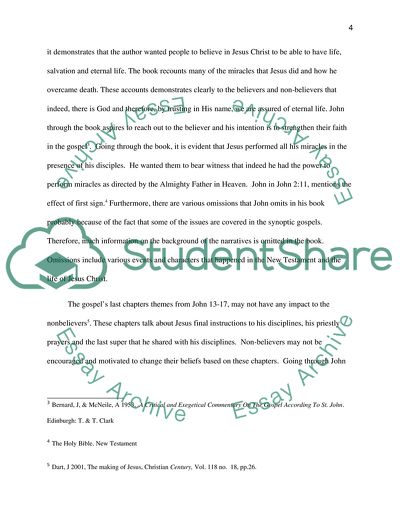Cite this document
(Whether a Narrative - critical Reading of John Assists in the Interpretation of the Gospel Book Report/Review Example | Topics and Well Written Essays - 2000 words, n.d.)
Whether a Narrative - critical Reading of John Assists in the Interpretation of the Gospel Book Report/Review Example | Topics and Well Written Essays - 2000 words. https://studentshare.org/religion-and-theology/1795051-discuss-whether-a-narrative-critical-reading-of-john-assists-in-the-interpretation-of-the-gospel
Whether a Narrative - critical Reading of John Assists in the Interpretation of the Gospel Book Report/Review Example | Topics and Well Written Essays - 2000 words. https://studentshare.org/religion-and-theology/1795051-discuss-whether-a-narrative-critical-reading-of-john-assists-in-the-interpretation-of-the-gospel
(Whether a Narrative - Critical Reading of John Assists in the Interpretation of the Gospel Book Report/Review Example | Topics and Well Written Essays - 2000 Words)
Whether a Narrative - Critical Reading of John Assists in the Interpretation of the Gospel Book Report/Review Example | Topics and Well Written Essays - 2000 Words. https://studentshare.org/religion-and-theology/1795051-discuss-whether-a-narrative-critical-reading-of-john-assists-in-the-interpretation-of-the-gospel.
Whether a Narrative - Critical Reading of John Assists in the Interpretation of the Gospel Book Report/Review Example | Topics and Well Written Essays - 2000 Words. https://studentshare.org/religion-and-theology/1795051-discuss-whether-a-narrative-critical-reading-of-john-assists-in-the-interpretation-of-the-gospel.
“Whether a Narrative - Critical Reading of John Assists in the Interpretation of the Gospel Book Report/Review Example | Topics and Well Written Essays - 2000 Words”. https://studentshare.org/religion-and-theology/1795051-discuss-whether-a-narrative-critical-reading-of-john-assists-in-the-interpretation-of-the-gospel.


